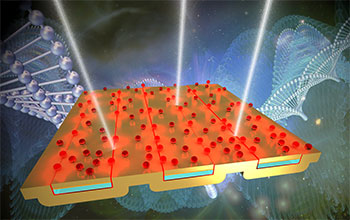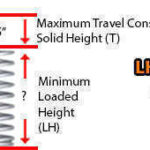Optical dynamic detection of bombs, or ODD, is the latest explosive detection technique. This article will discuss how the optical dynamic detection of bombs or explosives works compared to traditional ion mobility spectroscopy.
Until recently, ion mobility spectrometry (IMS) has been used for explosive or bomb detection, but there are many drawbacks to spectrometry or spectroscopy. The optical dynamic bomb detection or ODD technique is much more effective than spectrometry.
What is Ion Mobility Spectrometry?
Ion mobility spectrometry (IMS) works on the principle that ions of different materials can be characterized by their length of travel in an electric field. It also is assumed that if a bag or a person is carrying some explosive material, then some trace of the explosive material will be present on the bag or the person’s clothes and other surrounding items.
The IMS technician wipes a swab across the bag or persons cloth to collect trace materials of all kinds. Next, the sample is heated up and placed under a
radioactive field to become ionized. Once ionization is done, the ions of all the materials are allowed to pass through a drift tube, which is a tube with an electric field.
The movement characteristics of all the ions are tracked in the drift tube, and if some of them match with the known explosive molecules, then it is concluded that there is a presence of explosive materials.

Disadvantages of Ion Mobility Spectrometry
○ IMS comes with the risk of the technician coming in contact with the potential explosives for taking the sample. The bomb may explode and cost the technician’s life.
○ IMS often causes false detection or, in other words, it cannot differentiate some materials used in explosives and those used for some other purpose.
○ IMS sometimes fails to detect the explosive if it is buried under heavy background material.
Optical Dynamic Detection of Bomb Material
The optical dynamic detection (ODD) technique basically employs two kinds of laser and a “machine learning” device to identify the bomb material. In simple terms the machine learning devices means the sensor or receiver, which can detect some specific parameters.
○ An “ultra-fast” laser beam pulse with a specific optimal time-dependent electric field is called a “shaped laser.”
○ The shaped laser is used for creating excitement only of explosive materials. The shaped laser’s electric field is controlled in such a way that it can excite only the explosive material molecules and not the others.
○ The excited explosive molecule then creates distinct type of “energy signature.”
○ Another laser beam called the “probe laser” is then passed adjacent to the suspected material and the machine learning receiver detects the presence of the explosive material based on the energy signature.
○ The signal from the receiver is further processed, and human-understandable forms of the bomb detection results are displayed on the unit’s screen. Bomb detection experts can interpret the results and reliably determine the presence or absence of explosive materials.
Advantages of Optical Dynamic Detection of Bombs
○ Since in the ODD method there is no need to collect samples from the suspected objects, it is not necessary for the technician/operator to come near to the object, which at any time may explode. The technician can operate the detection from a safer distance.
○ The new ODD method employs the shaped laser for exciting precisely the explosive molecules, and thus it can reach the explosive molecules buried deep under the background material (say clothes) and hence be more effective than the traditional IMS method for detecting bombs buried under heavy background material. The optical dynamic detection of bomb is capable of detecting the smallest amount of explosive.
○ The shaped laser of the ODD system is passed through a specific kind of electric field, which is good enough to excite only the explosive molecules of interest, hence it is almost impossible that the ODD system will generate a false alarm.
Conclusion
The optical dynamic detection of bombs is the latest method for bomb or explosive detection. It rectifies the major drawbacks of the traditional ion mobility spectroscopy and allows the operator to maintain a safe distance. The article has discussed the overview of the concept; the actual detection method uses many complicated instruments.


